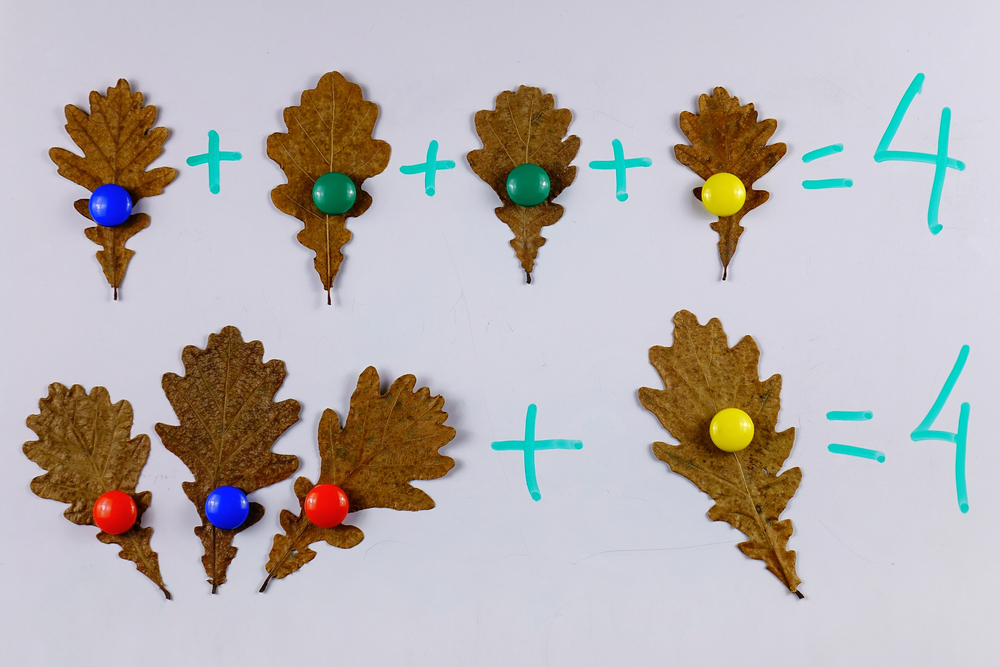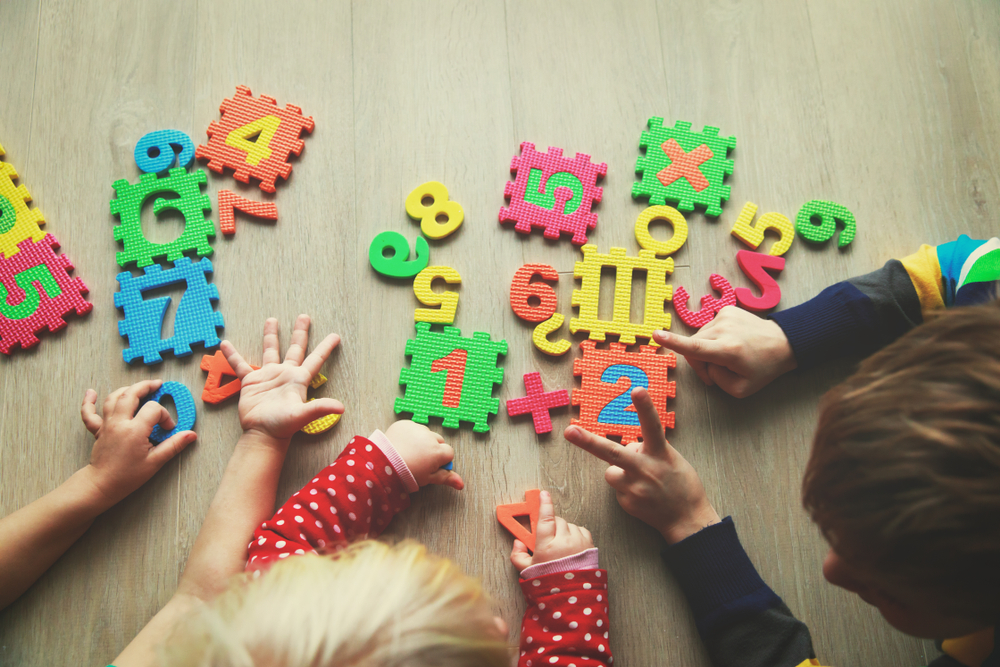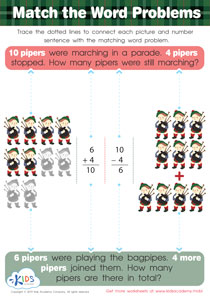Problem-Solving Skills Normal Addition Worksheets for Ages 3-4
4 filtered results
-
From - To
Enhance your little one's problem-solving skills with our engaging Normal Addition Worksheets designed specifically for ages 3-4. These worksheets make learning fun and interactive, helping children grasp fundamental math concepts through playful activities. Each worksheet encourages critical thinking and creativity, as kids tackle simple addition problems using colorful illustrations and relatable scenarios. By working through these problems, preschoolers will develop essential skills, boosting their confidence and readiness for more advanced math. Perfect for parents and educators alike, our worksheets provide a valuable resource for nurturing young minds. Start your child’s mathematical journey today and watch them thrive!
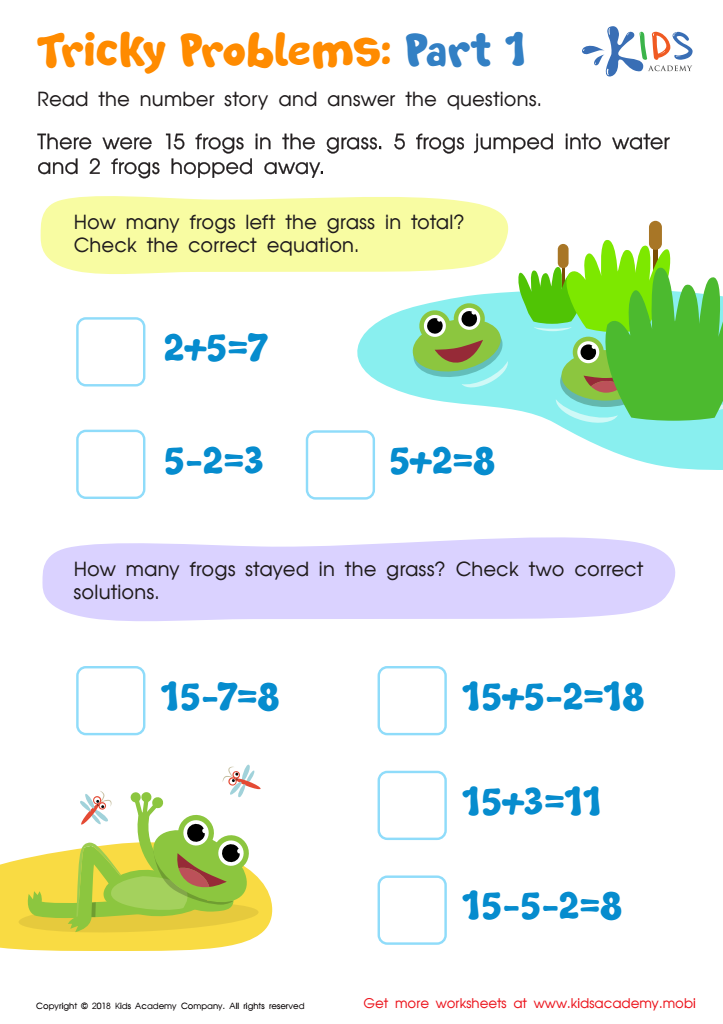

Tricky Problems Worksheet: Part 1
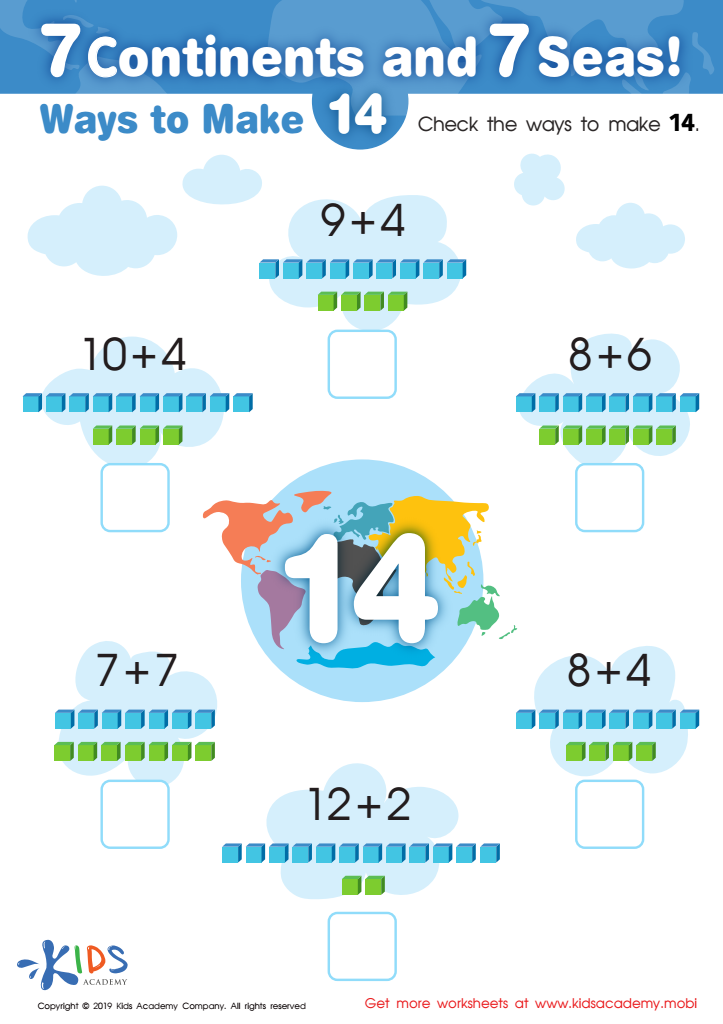

7 Continents and 7 Seas Worksheet
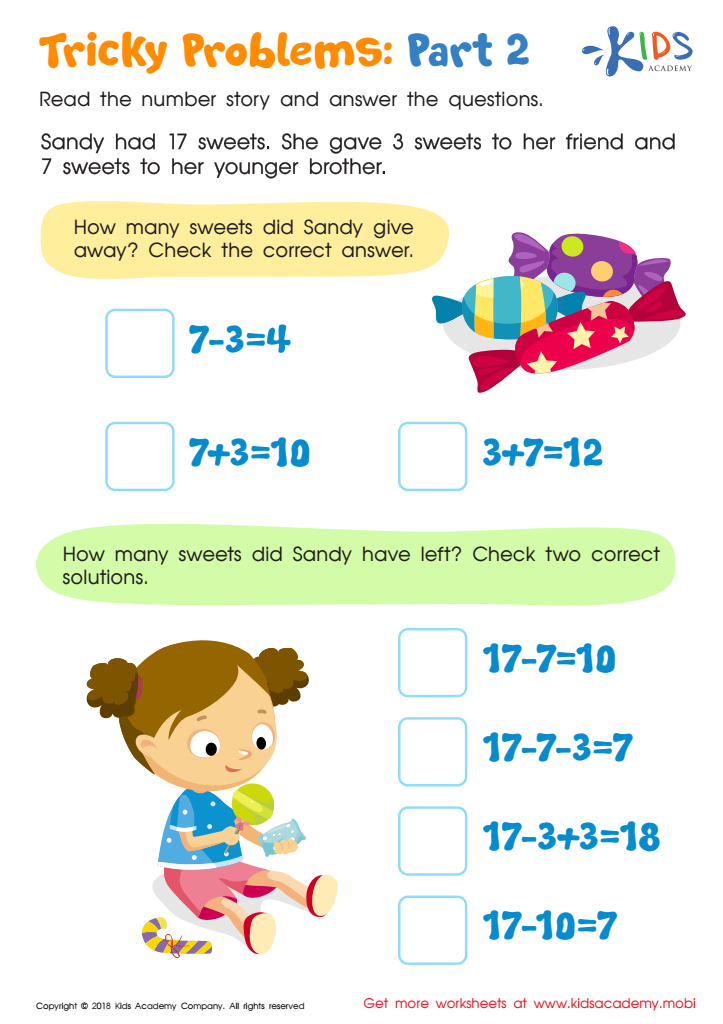

Tricky Problems Worksheet: Part 2


Addition and Subtraction: Word Problems Worksheet
Parents and teachers should prioritize problem-solving skills, particularly in normal addition, for children aged 3-4 because these foundational skills significantly impact cognitive development and future learning. At this age, children are naturally curious and eager to explore mathematical concepts, and early engagement in problem-solving helps them make sense of their world.
Teaching problem-solving through addition fosters critical thinking. Children learn to recognize patterns, understand quantity, and explore relationships between numbers—skills that are essential for more complex math operations later on. When children tackle simple addition problems, they develop perseverance, an essential life skill that aids them in overcoming challenges in various settings, academically and socially.
Moreover, nurturing these skills early contributes to a positive attitude toward mathematics. Children who feel confident in their problem-solving abilities are more likely to engage with math as they grow, thereby reducing anxiety about these subjects in the future.
Lastly, reinforcing addition and problem-solving at home or in the classroom enables cooperative play and interactive learning. By integrating fun and engaging activities, parents and teachers can lay the groundwork for a lifetime of curiosity, exploration, and learning in mathematics, empowering children to thrive both inside and outside the classroom.
 Assign to My Students
Assign to My Students





